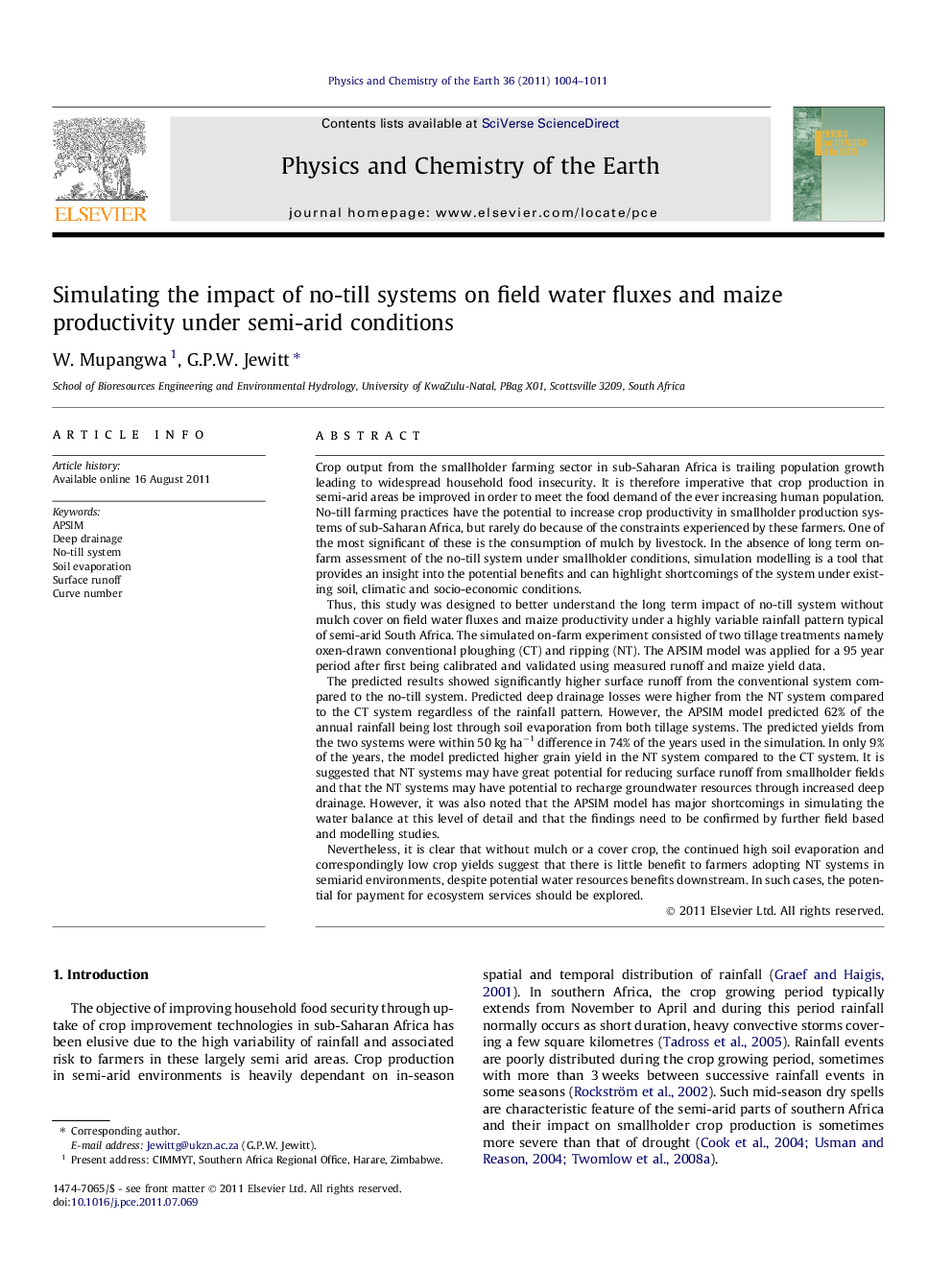| کد مقاله | کد نشریه | سال انتشار | مقاله انگلیسی | نسخه تمام متن |
|---|---|---|---|---|
| 4721318 | 1639374 | 2011 | 8 صفحه PDF | دانلود رایگان |

Crop output from the smallholder farming sector in sub-Saharan Africa is trailing population growth leading to widespread household food insecurity. It is therefore imperative that crop production in semi-arid areas be improved in order to meet the food demand of the ever increasing human population. No-till farming practices have the potential to increase crop productivity in smallholder production systems of sub-Saharan Africa, but rarely do because of the constraints experienced by these farmers. One of the most significant of these is the consumption of mulch by livestock. In the absence of long term on-farm assessment of the no-till system under smallholder conditions, simulation modelling is a tool that provides an insight into the potential benefits and can highlight shortcomings of the system under existing soil, climatic and socio-economic conditions.Thus, this study was designed to better understand the long term impact of no-till system without mulch cover on field water fluxes and maize productivity under a highly variable rainfall pattern typical of semi-arid South Africa. The simulated on-farm experiment consisted of two tillage treatments namely oxen-drawn conventional ploughing (CT) and ripping (NT). The APSIM model was applied for a 95 year period after first being calibrated and validated using measured runoff and maize yield data.The predicted results showed significantly higher surface runoff from the conventional system compared to the no-till system. Predicted deep drainage losses were higher from the NT system compared to the CT system regardless of the rainfall pattern. However, the APSIM model predicted 62% of the annual rainfall being lost through soil evaporation from both tillage systems. The predicted yields from the two systems were within 50 kg ha−1 difference in 74% of the years used in the simulation. In only 9% of the years, the model predicted higher grain yield in the NT system compared to the CT system. It is suggested that NT systems may have great potential for reducing surface runoff from smallholder fields and that the NT systems may have potential to recharge groundwater resources through increased deep drainage. However, it was also noted that the APSIM model has major shortcomings in simulating the water balance at this level of detail and that the findings need to be confirmed by further field based and modelling studies.Nevertheless, it is clear that without mulch or a cover crop, the continued high soil evaporation and correspondingly low crop yields suggest that there is little benefit to farmers adopting NT systems in semiarid environments, despite potential water resources benefits downstream. In such cases, the potential for payment for ecosystem services should be explored.
► Smallholder farmers face significant constraints in implementing no till practices.
► These limit both uptake and effectiveness of no till in improving crop yields.
► Maintaining soil cover is the major problem to smallholders who select no till in areas where livestock are prevalent.
► Water resources benefits may be realised but, without soil cover, no till does not necessarily provide better crop yields.
► Simulation models can effectively complement field observations by extending the analysis period.
Journal: Physics and Chemistry of the Earth, Parts A/B/C - Volume 36, Issues 14–15, 2011, Pages 1004–1011